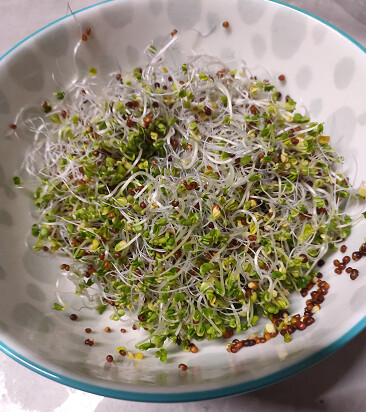If you want to test yourself you can try to dry scoop TUDCA. I tried and I vomit non stopw the taste stick to the tongue and at least for me it makes me vomit.
Haha yea might skip that one. What was the taste like??
Impossible to explain. Instant vomit reflex ![]()
I’m thrilled to hear this because they are so good for you!! Wasn’t it satisfying to make them yourself!
I really need to get back on the wagon…
@jeanbaptiste I’ve never tasted anything that bad!
Yes for sure. I’ve got my 2nd batch growing while I eat my first. It’s honestly not that difficult either I just have some alarms on my phone twice a day to remember to rinse and drain the jar.
Chinese cabbage (Bai Cai, “White cabbage”) is totally different from Bok Choi (in cantonese, in mandarin its called “Shanghai Cai”, that is, Shanghai cabbage). “Chinese cabbage” is like a big, long, much thinner, curly white cabbage. I’m a bit surrised and disappointed they haven’t included Bok Choy in the list (and also “Morning Glory” or “Gong Xin Cai”, empt hearted cabbage which grow in water).
My recent batch of broccoli sprouts.

I hear intermittent use of sulforaphane is superior to continuous use. Sprouting is a good way to keep it intermittent, and cheap.
I don’t bother removing the seed husks as it is time consuming and I don’t find them off putting.
Oh, interesting. Can you share links toabout this?
I don’t remember unfortunately. Someone on this forum mentioned it. I didn’t look too far into it, but since I was planning on growing sprouts I just thought it would be a convenient thing if true.
Sulforaphane is an NRF2 activator.
Studies are needed to evaluate if the ‘hit and run’ approach, shown to be effective for senolytics [63], should also be used when NRF2–KEAP1 is targeted. The seasonal changes in NRF2–KEAP1 expression that occur in the animal kingdom may support such an approach [19]. The correct dosage of activators for stress sensors and their putative interactions with disease‐related pathways remains a concern [64]. NRF2 hyperactivation could promote oncogenesis [4]; therefore safety signals for increased risk of cancer should be taken seriously and the ‘sweet spot’ for NRF2 activation needs to be identified. Moreover, different NRF2 agonists have different potentials for carcinogenic effects [65]. As constitutive over-activation of NRF2 may be oncogenic, promote hyperplasia and increase susceptibility to atherosclerosis [3], NRF2 may have evolved in response to different selective pressures during evolution. Thus, as the global characterization of NRF2 activation is biphasic [3], both increased and depressed NRF2 expression should be avoided.
Thought I would just skim through, because the scroll bar indicated a long article. But I read it in its entirety. It is an engaging read.
BROQ has changed their delivery system to make it easier on the stomach. I actually take 3 on an empty stomach every morning with no problem.